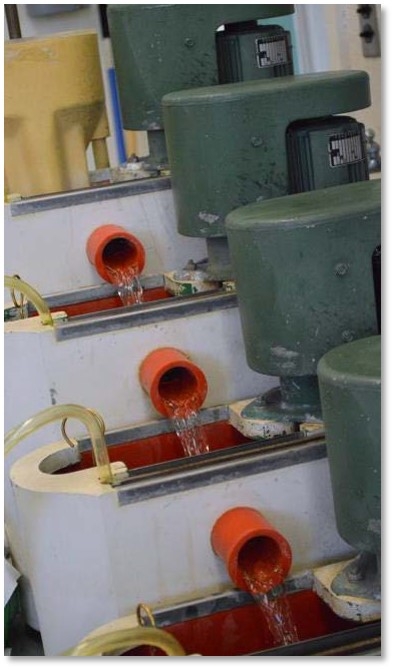
Features
Research & Innovation
Chips to bale: Optimizing the fibreline
October 17, 2018 – For 25 years, Theodore Radiotis, lead scientist for fibre production and smart manufacturing, has been working with FPInnovations’ Chemical Pulping Group. Throughout that time, he has been a part of the organization’s close collaboration with the pulp and paper industry, cultivating innovative advantages for the sector.
October 17, 2018 By FPInnovations

Today, the group is uniquely armed with a full scope of technologies and tools blended with a wealth of knowledge amassed over the years, plus benchmarking data of over 20 mills for comparison and recommendations. Solutions that optimize fibreline processes and reduce production costs enhance mills’ competitiveness in both traditional and growth market segments.
A fibreline audit analyzes the entire pulp manufacturing process, from wood chips to bale, and is often the first step in identifying challenges that may be impacting productivity, costs or quality. “The goal is to ensure mills’ pulping processes are running at peak efficiency, thereby maximizing their operating capability and product quality,” says Radiotis. Formulating the optimal “pulpability” plan requires the team take on a holistic approach. Ideal wood and chip quality, fast rate of delignification, optimal use of additives, highest yield of unbleached pulp from wood, and best possible strength and bleachability are all factored into the equation.
For one customer, the audit revealed aggressive cooking conditions were causing a two per cent yield loss on wood and three times higher tensile strength loss than normal. It also uncovered the mill was pulping a high amount of over-thick chips, which increased screen rejects from 0.1 per cent to one per cent. The mill achieved significant efficiency improvement by working with FPInnovations to address these issues.
Projects often require the wisdom of other teams within FPInnovations. This synergistic approach ensures customers receive thorough evaluations and comprehensive solutions. In this specific case, for example, bleaching experts demonstrated that the higher than usual sodium hydroxide charge in O2 delignification resulted in a 10 per cent strength loss compared to the typical loss of five per cent. Fibreline audits often extend to the bleaching process. Bleach plants that are not fully optimized can lead to excessive costs and sometimes compromise pulp quality. Radiotis explains, “Our in-house expertise covering the gamut of pulp processing, combined with our pilot plants in Pointe-Claire, enable us to pinpoint what is really happening in a mill’s process and offer practical recommendations.”
The Quebec-based pilot and laboratory facilities are fully equipped to simulate the chemistry of any pulping operations in order to determine causes of the issues at hand and to develop “sweet spot” operating conditions or a new pulp grade. With the information generated from these lab optimization studies, FPInnovations can support the mill with a full-scale implementation.
Targeted technologies
FPInnovations’ technologies reinforce fibreline audits and expert consultation to assist mills in achieving their ideal outcomes.
- Near-Neutral Brightening (NNB): This patented near-neutral chlorine dioxide brightening technology effectively decreases bleaching costs by maximizing ClO2 bleaching efficiency. Benefits: Reduces ClO2 demand by up to five kg/MT, eliminates antichlor, and maximizes brightness and brightness stability.
- Paprilox™: Polysulphide is added into kraft pulping to improve hemicellulose retention and thus pulp yield. A patented technique for generating polysulphide in-situ, Paprilox can be retrofitted into a mill’s existing caustizing system to use lime mud as a catalyst. Benefits: Typical yield increases of 1.5 per cent on wood, a five- to 24-month payback period, and a five per cent to 17 per cent increase in tensile strength relative to conventional kraft pulp.
Fibreline operation improvements and cost reductions can have an annual financial impact ranging from approximately $0.5 million to over $1 million. From solving material or process problems to conducting comprehensive pulpability studies, FPInnovations continues to build upon several decades of research and industry experience in chemical pulping. With its commitment to long-term relationships with industry members, FPInnovations’ evolution of its knowledge base and technologies will persist, empowering pulp and paper mills in a globally competitive environment.
FPInnovations is a not-for-profit organization that supports the Canadian forest sector’s global competitiveness.
This article originally appeared in the Fall 2018 issue of Pulp & Paper Canada.
Print this page